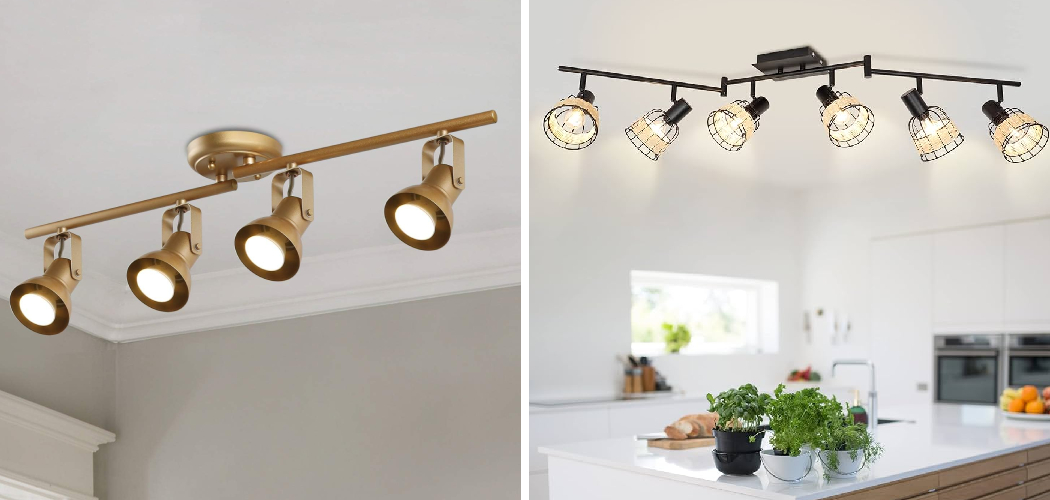Track lighting is a versatile and stylish option for illuminating spaces, but determining its type can be perplexing. Understanding the design and components of your track lighting system is essential for maintenance, upgrades, or troubleshooting.
Whether you’re a homeowner, renter, or commercial property manager, deciphering the specifics of your track lighting is paramount for optimal functionality and aesthetics.
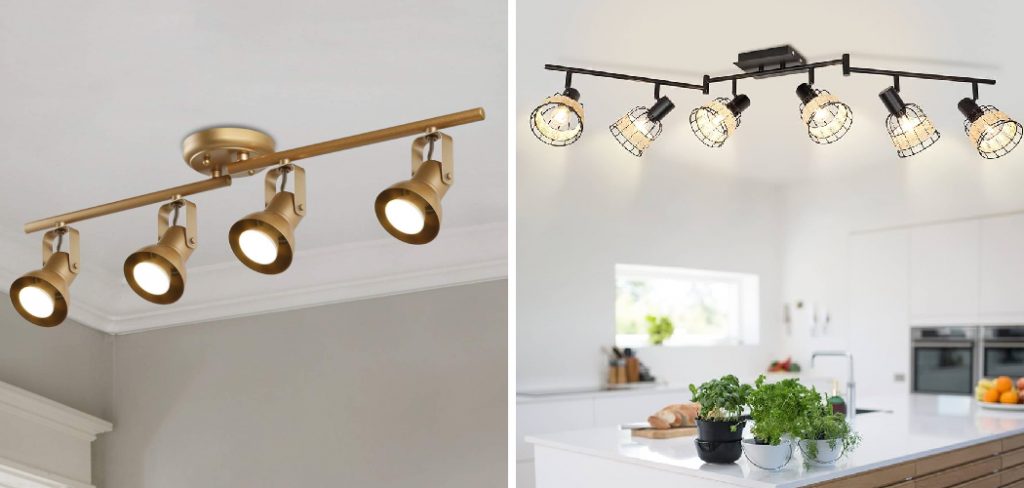
From traditional line voltage to low-voltage track systems, identifying the type of track lighting you have involves assessing various elements such as the power source, track shape, and connector types.
By examining the fixtures, track heads, and accessories, you can discern crucial clues about your lighting setup. Furthermore, distinguishing between H-type, J-type, or L-type tracks aids in selecting compatible components and accessories. This guide aims to demystify the complexities of how to tell what type of track lighting you have, empowering you to confidently determine the type of track lighting system gracing your ceilings and enhancing your space’s ambiance.
Importance of Identifying Track Lighting Type
Identifying the correct type of track lighting is crucial for achieving the desired ambiance and functionality in a space. Different track systems are not universally compatible, thus selecting the right type ensures that light fixtures fit securely and function properly.
Moreover, each type offers distinct advantages in terms of flexibility and aesthetics, making the choice an integral part of the design process that can significantly impact the overall look and feel of the environment.
Understanding Track Lighting Basics
Before diving into the identification of track lighting systems, it’s beneficial to grasp the basic components that comprise your setup. Track lighting generally consists of a linear track that houses electrical conductors and serves as the anchor for the attached light fixtures, known as track heads or pendants. The track itself can be mounted to walls or ceilings and can be straight or curved, providing creative flexibility in lighting design.
The most rudimentary distinction to be made is between line-voltage and low-voltage tracks, which are differentiated by the amount of electrical current they carry. Line voltage tracks are common in household and commercial environments and operate directly on the standard electrical supply, while low-voltage tracks require a transformer to step down the voltage. Recognizing these differences is the first step towards understanding and working with track lighting systems.
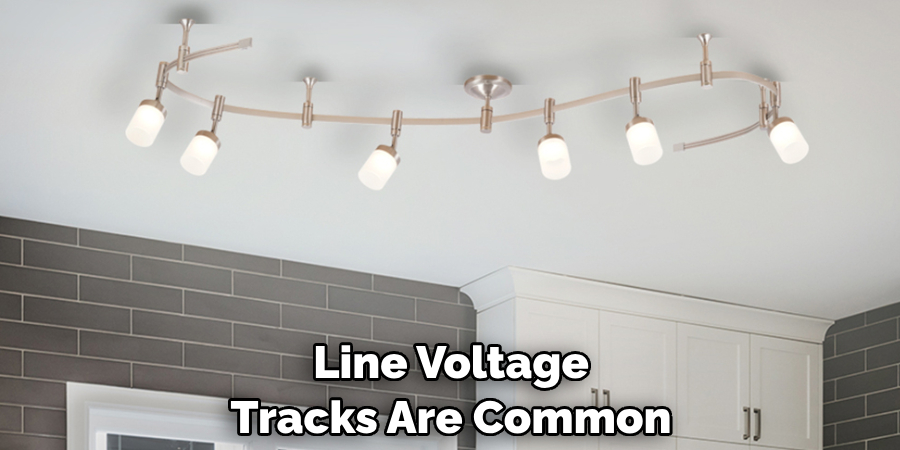
Definition and Purpose of Track Lighting
Track lighting, by definition, is a method of lighting where light fixtures are attached anywhere on a continuous track device which contains electrical conductors. This type of lighting is distinguished by its flexibility in allowing the lights, or ‘track heads’, to be easily moved and repositioned along the track to highlight decorative pieces, illuminate work areas, or create ambient lighting in various settings.
Its purpose is multifaceted, serving not solely as a source of illumination but also as an element of interior design. By using track lighting, designers and homeowners can tailor the lighting in a room to match specific needs and styles, providing focused light in strategic areas without the need for multiple lighting fixtures and complex wiring.
Types of Track Lighting Systems
The track lighting world is home to various systems, each designed with unique connectors and architectural styles in mind. The three most common types are H-type, J-type, and L-type, differentiated mainly by their connectors and compatibility with track heads.
- H-type (Halo) tracks have a three-wire single circuit system and are widely recognized by their larger size. They are known for their versatility and compatibility with a wider range of lighting fixtures.
- J-type (Juno) tracks feature a two-wire single circuit setup. They are easily identified by the distinct shape of their track heads and end feed connector, which often has a smaller contact tip that enters the track.
- L-type (Lightolier) tracks offer a unique profile with their two-wire single circuit system, differing subtly in design and connector shape from the J-type, thus necessitating specific L-type fixtures.
Additionally, there are specialized systems like the monorail track and cable lighting, which add a contemporary flair and offer even more customization for creative and flexible lighting solutions.
Each type serves a specific purpose and offers a variety of design choices to accommodate different aesthetics and functional needs. It is imperative to recognize these systems to ensure that all components are compatible and to achieve the most efficient and visually pleasing lighting setup for your space.
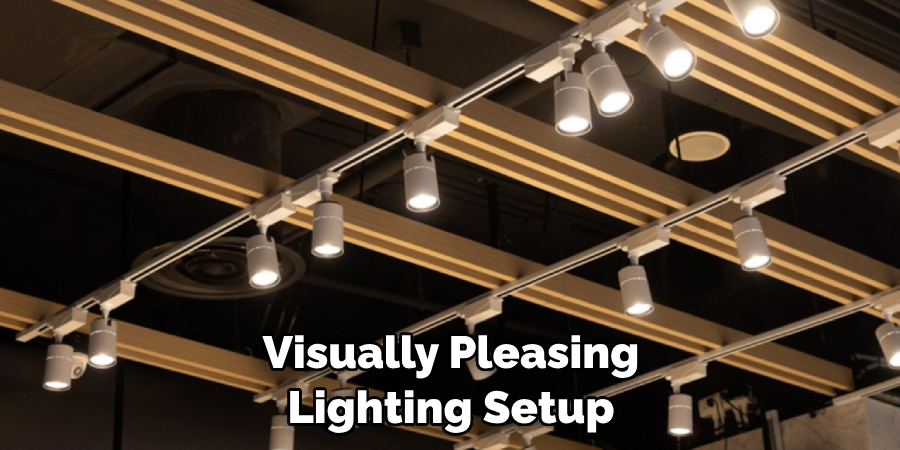
10 Methods How to Tell What Type of Track Lighting You Have
1. Examine the Track Shape and Design
One of the primary indicators of track lighting type is its shape and design. Track lighting comes in various profiles, including straight, curved, and flexible designs. Examine the track layout in your space and note any distinct features such as bends or curves. This initial observation can provide valuable clues about the track system’s type and style.
Some track systems have a standard straight design, while others are more flexible. Straight tracks are the most common type and feature a linear shape that can be installed in a straight line or at various angles. Curved tracks, on the other hand, typically have a U-shaped or arching design, making them ideal for curved spaces or accent lighting.
2. Check the Track Mounting Method
The method of mounting the track to the ceiling or wall can reveal important information about the track lighting system. Some tracks are directly mounted, while others may use a pendant or suspension mounting. Inspect the mounting points and hardware to determine if your track lighting is secured directly to the ceiling or suspended from it.
If your track lighting is directly mounted, it is important to make sure that the track is securely attached to the ceiling or wall. This can be done by using heavy duty screws and anchors appropriate for the type of surface you are mounting on. It’s also crucial to ensure that the screws are evenly spaced along the length of the track to distribute weight evenly.
3. Evaluate Track Head Compatibility
Different track lighting systems have specific types of track heads that are compatible with them. Examine the track heads on your system and check for any branding, model numbers, or compatibility information. Cross-reference this information with manufacturer specifications to identify the type of track system in place.
After identifying the track system, evaluate the compatibility of different track heads for your lighting needs. Consider factors such as beam angle, color temperature, and lumen output to ensure that the selected track head will provide the desired lighting effect and level of brightness.
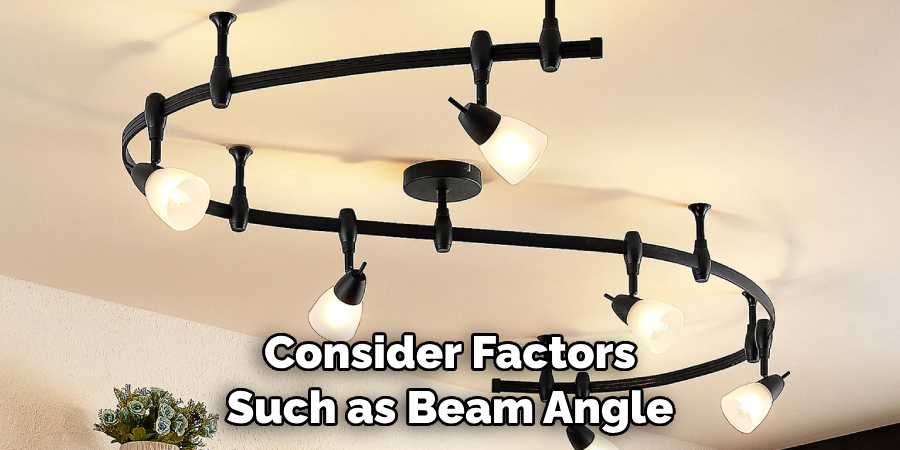
In addition to compatibility with the track system, it is also important to consider the design and style of the track head. Some track heads may have adjustable features such as direction and tilt, making them more versatile for different lighting scenarios. Others may have a specific design or finish that complements the overall aesthetic of the space.
4. Inspect the Track Voltage
Track lighting systems operate at different voltage levels, such as 120V or 277V. Use a voltage tester to check the voltage specifications on the track or any associated documentation. Understanding the voltage can narrow down the options and help identify the specific type of track lighting system in use. Additionally, inspecting the track voltage can also help in determining the appropriate type of light fixtures and bulbs that can be used on the track.
It is important to note that using incorrect voltage levels for a track lighting system can damage the fixtures and pose a safety hazard. Before making any changes or additions to a track lighting system, always ensure that the voltage is within the recommended range. In cases where the voltage is not specified or cannot be determined, it is best to consult a professional electrician for assistance.
Furthermore, when inspecting the track voltage, it is also important to check for any signs of wear and tear on the wiring and connections. Damaged or loose wiring can cause fluctuations in the voltage, leading to potential issues with the track lighting system. If any damage or issues are found, it is crucial to address them immediately before using the track lighting system.
5. Measure the Track Width
Track width is another crucial parameter that varies among different track lighting systems. Measure the width of your track carefully, including any additional features like grooves or channels. Comparing this measurement with standard track sizes can assist in identifying the specific type of track lighting you have.
If the track width is larger than standard sizes, you may have to look for compatible components from the same manufacturer or invest in adapters. However, with smaller track widths, a wider range of options is usually available.
When choosing track lighting components, it’s essential to consider both the track size and its compatibility with other components like connectors and power feeds. It’s also important to ensure that the track width is proportional to the space you’re illuminating. A narrow track may not provide enough light for a large room, while a wide track may overpower a smaller space.
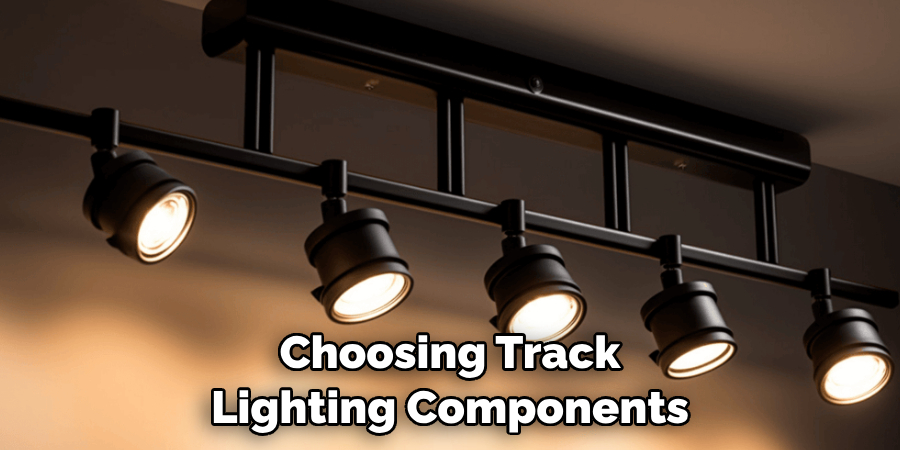
6. Examine Track Connectors and Joints
The connectors and joints used in your track lighting system can offer valuable information about its type. Some tracks use specific connectors for compatibility, and the design of the joints may be unique to certain manufacturers. Inspect these components closely to gather insights into the track system’s origin.
Additionally, the type of connectors and joints used can provide clues about the track’s installation process. For example, if the connectors are screw-in types, it may indicate that the track was intended for permanent installation rather than a temporary one. On the other hand, if the connectors are snap-on or plug-in types, it could suggest a simple DIY-friendly installation method.
Moreover, connectors and joints play a crucial role in the overall functionality of your track lighting system. They are responsible for securely holding the track pieces together, ensuring proper electrical connections, and allowing for adjustments in direction or length as needed. Faulty connectors or joints can result in unstable tracks and potential safety hazards.
7. Review Installation Documentation
If available, review any installation documentation or manuals that came with the track lighting system. These documents often contain detailed information about the type of track, recommended accessories, and installation guidelines. Look for product names, model numbers, or any distinctive features mentioned in the documentation. This will help you verify that you have the correct components and understand how to properly install them.
Additionally, installation documentation may also include important safety information, such as maximum load capacities for the track and recommended bulb wattage. It is important to follow these guidelines to avoid any potential hazards or damage to the system.
If no installation documentation was provided, try searching online for product manuals or guides from the manufacturer’s website. You can also reach out to customer support for assistance or clarification.

8. Explore Online Resources and Manufacturer Websites
Utilize online resources and visit the official websites of track lighting manufacturers. Many manufacturers provide detailed product information, including specifications, compatibility details, and visual guides. By cross-referencing the details of your track lighting with online resources, you can narrow down the possibilities and identify the specific type. You can also find helpful installation instructions and troubleshooting tips on these websites.
In addition to product information, manufacturer websites often offer design inspiration and ideas for incorporating track lighting into your space. They may have a blog or gallery section featuring real-life installations, as well as tips for creating different lighting effects with track lights. This can be especially helpful if you are new to using track lighting and need some creative direction.
Furthermore, manufacturer websites may also have customer reviews and ratings for their products. Reading through these can give you a better understanding of the quality and performance of different track lighting options. You can also find information on warranty and return policies, which is important to consider when making a purchase.
9. Consult with Lighting Professionals
Seek advice from lighting professionals or electricians who specialize in track lighting systems. They often have extensive experience with various types of track lighting and can offer insights based on visual observations and specific details of your installation. A professional opinion can be valuable in accurately identifying your track lighting type. However, if this is not an option for you, there are a few ways to identify your track lighting type on your own. Though, it is always recommended to seek professional help for any electrical work.

Some common types of track lighting include H-style, J-style, and L-style tracks. Each type has its own unique design and features that make it suitable for different purposes. For instance, the H-style track is known for its flexibility in terms of directionality and arrangement options. It allows you to easily adjust the position of your fixtures and create custom lighting designs.
10. Visit Lighting Showrooms or Stores
Visit local lighting showrooms or stores that carry a variety of track lighting systems. Compare your track lighting with the displays in these stores to identify similarities or distinctive features. Sales representatives may also provide valuable input based on their knowledge of different track lighting products.
Consider asking for recommendations or advice on how to enhance the aesthetics or functionality of your track lighting. Don’t be afraid to explore different options and styles, as there may be a solution that you haven’t considered yet.
In addition to physical stores, many online retailers also offer a wide selection of track lighting systems. This allows you to browse and compare various options from the comfort of your own home. However, keep in mind that the colors and finishes may vary slightly in person compared to how they appear on a computer screen.
Troubleshooting and Problem-Solving
If you’ve identified your track lighting system but encounter issues with its operation, troubleshooting is a crucial step. Begin by inspecting all components for signs of damage such as cracks, burnt areas, or loose connections. Ensure that the power is turned off before examining electrical components for safety.
A common problem with track lighting is flickering or non-functioning lights, which may be due to a poor connection between the track heads and the track itself. Try removing and re-securing the track heads to improve contact. If the issue persists, check if the bulbs are properly installed and are the correct type for your system.
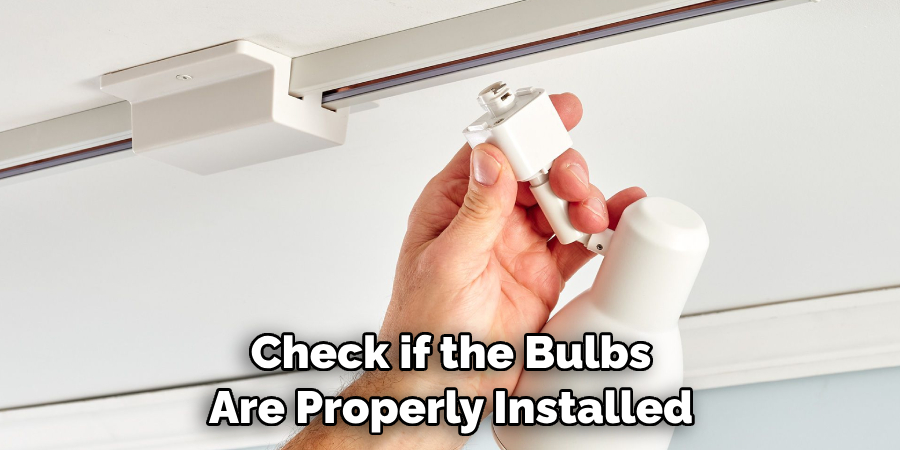
Conclusion
In conclusion, identifying the type of track lighting in your space is crucial for both aesthetic and functional reasons. The journey to determining your track lighting type involves a comprehensive exploration of various features, dimensions, and installation methods. By carefully examining the track design, connector types, and the number of conductors, you can gain valuable insights into the system’s specifications.
Additionally, considering the bulb and socket configurations, as well as the compatibility with dimmer switches, aids in narrowing down the possibilities. Hopefully, this article gave you some helpful tips about how to tell what type of track lighting you have successfully, so now that you have the proper knowledge on how to get the job done, why not give it a try today?

